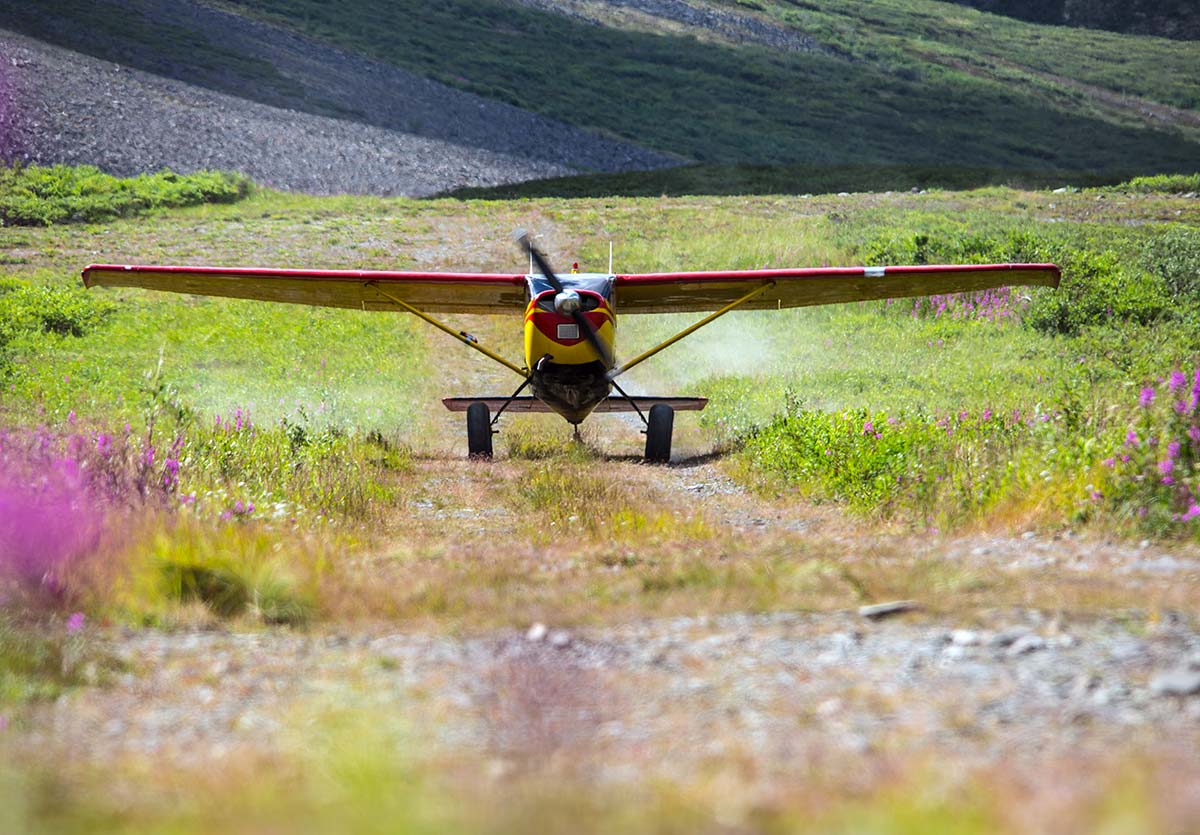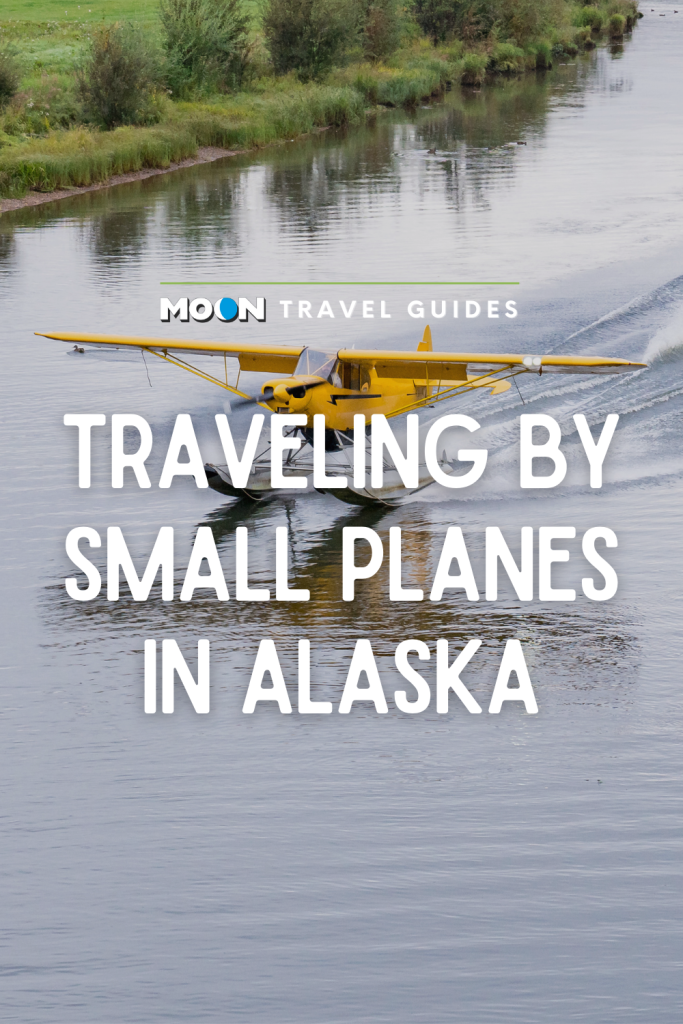Traveling by Small Planes in Alaska
For many residents of rural Alaska—that is, the small communities that exist off the state’s very limited road system—traveling in small planes is the only way to get from community to community.

For visitors, boarding a small plane is a thrilling glimpse into another way of life or an exotic way of reaching the next adventure. Of course, the act of getting into a small plane can be either scary or exciting, because it’s so unlike any jet you’ve ever flown in. With that in mind, here are a few things you should know about traveling in small aircraft:
- Limit your luggage. Weight and balance are a crucial matter for small planes, and the storage compartments—aft, in the floats, or in the wings—are small, so passengers are usually allowed just one small hand-carry item, typically limited to 10 lbs (4.5 kg) or less and small enough to fit under the seat in front of you. If you’re allowed checked luggage it will be very limited, both in size and weight. No big suitcases!
- Expect to be weighed. This doesn’t always happen, but you should be ready to be weighed, along with your luggage, before you get on any small plane. If the airline doesn’t weigh you, they will probably ask your weight and then weigh your luggage. Some tour operators and small airlines set passenger weight limits, typically 300-350 lbs (136-159 kg). If you are over this limit, you may be asked to buy more than one seat.
- Expect to be separated from your luggage. Because weight and balance are so crucial in a small plane, luggage is sometimes left behind to keep the plane’s weight within safe limits. It’ll catch up to you—eventually—but that can take up to a couple of days, depending on how frequent the flights are. So always pack enough essentials into your carry-on—which may be limited to the size of a large handbag; for specific dimensions, ask your airline— to get by until your bags catch up. That includes clothes, toiletries, and essential medications.
- Small planes are limited by weather. Most small plane flights in Alaska are limited to visual flight rules—they don’t fly on instruments alone—so they can’t take to the air when visibility is bad at the starting point or the destination. Pilots have crashed because of flying in marginal conditions so, even though it’s frustrating to have your flight delayed or canceled, it’s a good sign that the pilot or company you’ve chosen is safety-conscious… and it’s much better than the alternative.
- Alaska planes are almost always old. Nobody cares what a bush plane looks like—the important thing is that it flies. With that in mind, one of the most beloved planes for use in Alaska is the de Havilland Beaver, a rugged workhorse that’s so functional, you can actually refill the engine oil from inside the cockpit—as you’re flying! The de Havilland Beaver was first flown in 1947 and ceased commercial production in 1967. So if you’re lucky enough to fly in one, it could be almost 80 years old. They’re still in service because they’re still the best you can get for Alaska’s challenging flying conditions.
- Check airline safety records. Some people are terrified by the prospect of flying in a small plane; for every Alaskan with his or her own pilot’s license and plane, there’s another who will only get into a small plane if there’s no other alternative. One of the best ways to soothe any safety concerns you have is by looking up the safety record of the airline or tour operator you’re considering on both the National Transportation Safety Board and Federal Aviation Administration websites. You can also talk to the tour operators about your concerns. Don’t worry—they’re used to fielding these questions!
- Some turbulence is normal. When you’re in a small plane, you’ll feel every bump or bounce of turbulence much more than you’d feel them while flying through the same air patterns in a large plane. Don’t worry: A little bit of bouncing around is perfectly normal, especially when traveling over rugged or mountainous terrain. For the most part, your flight should still be smooth.
- Bring a jacket. I always bring at least a light jacket with me on an airplane, even in the summer. The air gets chilly up there!
- Ask about the view. Most tour planes carry 6-8 passengers, depending on the configuration, and are set up so that every seat has a window to look out. They also don’t sell assigned seats: Everyone just walks onto the plane and chooses where they’ll sit. Sometimes one lucky passenger gets to sit up front with the pilot. The cockpit is completely open, so you’ll get to watch what they’re doing even from the back. Every once in a while you’ll see a plane in which a couple of the seats, usually toward the back, don’t have a great view. Some nervous flyers prefer these seats. If you do want to see everything around you, though, and are concerned about ending up in a seat without a view, talk to your tour operator beforehand.
- Think ahead on airsickness. I have never been airsick on a small plane, nor have I ever seen another passenger feeling airsick—but it can happen. If you know you’re prone to getting airsick, take your motion sickness remedy of choice before getting into the plane. If you wait until you already feel sick, it’ll be too late to get much relief.
Newsletter Signup
By clicking ‘Sign Up,’ I acknowledge that I have read and agree to Hachette Book Group’s Privacy Policy and Terms of Use
Pin It for Later


